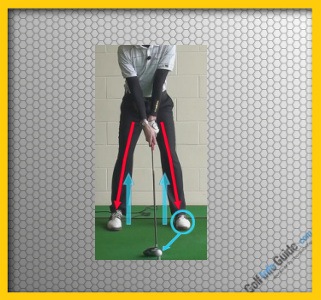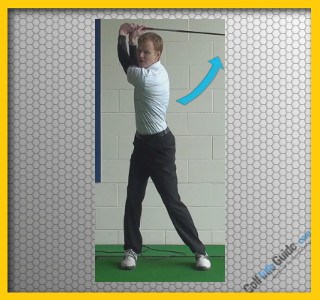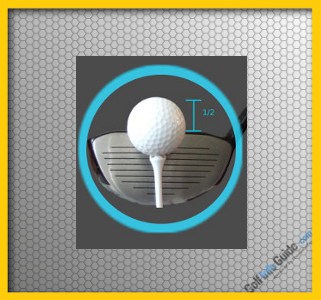It’s been done a million times. You know the scene, where an unsuspecting and serious player deciding to play the back tees looks as though he could hit the ball forever, takes a mighty lash at the ball and goes right underneath it. The ball makes contact with the club on the top of the face and pops straight up in the air. It travels a small distance into a hazard that lies directly in front of the tee.
The pop up happens to most recreational golfers and can be very frustrating as so much energy is put into the shot with very little distance coming out. For more seasoned golfers, the pop up still produces some distance though only 60% of what they would regularly see. The difference between the recreational and seasoned player pop up comes down to experience and swing technique. The seasoned player has better technique and when the ball makes contact near the top of the club face, it still comes off with decent speed. Whereas, a recreational golfer has weaker technique creating a steep swing path and sharper angle of attack at impact. The end result is contact more on top of the club than the face.
The following tips will help the recreational golfer understand what makes a pop up happen and how to correct it quickly.

To correct a pop up, it’s important to understand that narrow is bad and wide is good. When a pop up occurs it likely means your swing was straight up and straight down where the club makes contact with the ball on the downswing rather than the upswing. Always remember that the shape and flight of the ball is a great indicator of our golf swing. A driver is designed to be struck with a shallow angle of attack where impact occurs directly after the club bottoms out in the swing arc. Therefore, when we swing a driver, a friendly reminder needs to occur where the takeaway is low and slow in a wide fashion away from the target. If we can develop this takeaway action, it will increase the chances of keeping our swing shallow through impact and making contact towards the middle of the club face. You will also notice a much lower ball flight with the driver.

More often than not, when a golfer struggles with a pop up in their long game, they look as though they’re about to hit a wedge and not a driver. With a wedge we like to see a narrow stance and a neutral ball position. If we see this set up relationship with the driver, it’s a recipe for disaster. If you’ve just hit a couple tee shots straight up in the air, make sure you widen the stance beyond shoulder width. This will help to flatten out the swing and allow the length of the club to swing around your body. When we stand wider, we create a circular swing path rather than an oval. The last key point to widening your stance is to also ensure the ball is positioned a little further away from your body.

Tip #3 Head Behind Ball at Impact
When it comes to swing mechanics, a regular flaw that occurs with a pop up is the position of the head or center line of the body. It’s very common to see the player’s head either get equal to the ball at impact or slightly beyond the ball. The ideal position of the head and chest at impact while hitting a driver is to be slightly behind the ball. With a right handed professional, if you were looking straight on at impact, a perfect line would be formed from the left knee, hip and shoulder. The head and chest would be positioned behind this line and the shoulders would be tilted slightly upwards. A great drill to practice the impact position is to grab a piece of 2X4 wood and place it outwards toward the target. The end of the block represents ball position. Take your set up and slowly push the block a few inches down the target line. What happens to your Head? In order to push the block straight, it needs to move slightly back.

This is likely the first thing someone will say if you’ve just hit a couple pop ups in a row “Tee it down lower next time.” This won’t do a thing if you stand narrow and swing narrow as you’ll keep hitting the ball on the downswing causing the ball to go straight up. Once you get wider with both stance and swing, it’s important to find the proper height to tee your ball. This might take a few practice sessions. However, ideally you want the ball teed up so it sits just a little higher than the center of the club face.






